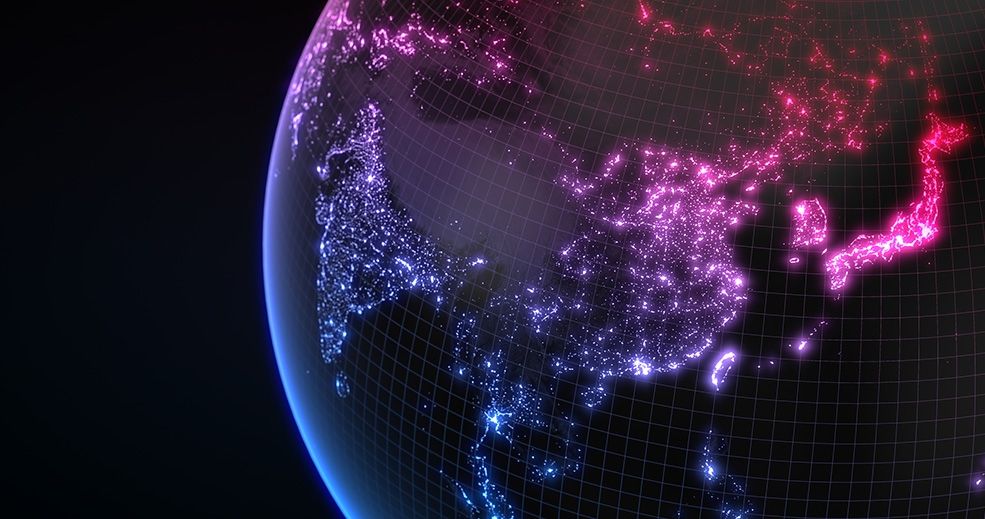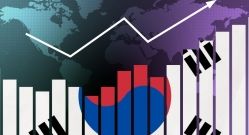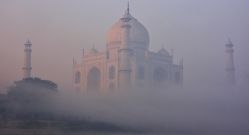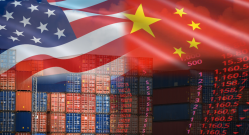
Asia remains the focus of hopes for future global growth
At its Spring Meetings, the IMF updated its growth and inflation forecasts, painting a picture of a slowing global economy marked by structurally higher inflation.
Against this backdrop, Asian countries are holding their own, helped in particular by a bullish regional environment buoyed by a better-performing China. The country’s outlook has logically improved since last October following the lifting of Covid-related restrictions, the last of which were withdrawn in January. With growth expected to exceed 5% – the official target for 2023 – China will, however, have to rely on internal components of activity, including in particular consumer spending, which is slowly picking up again.
In the rest of Asia, the landscape is much different from how it looked in 2021 and 2022: the economic cycle in the ASEAN countries (with the exception of Singapore), hit so hard by Covid due to stringent public health restrictions and slow vaccination campaigns that delayed the reopening of their borders, is now ahead of the rest of the developed world. Boosted by more favourable base effects and the effect of China, they are set to deliver high levels of growth in 2023, in some cases (the Philippines and Vietnam) in excess of 5%.
These countries are benefiting from a still buoyant regional environment, boosted by the reopening of China, which has yet to deliver its full potential, particularly in terms of tourist business. Thailand and Vietnam would have much to gain from the return of Chinese tourists, who previously accounted for up to a third of international visitors. While the resumption of scheduled flights and organised travel is helping, visitor numbers are still well below 2019 levels.
The outlook for North Asia (Korea and Taiwan) – which, unlike the ASEAN countries, benefited significantly during the Covid period, in particular from the export super-cycle – is darkening as demand for technological products (semiconductors) slows and inflation quickens, dampening consumer demand.
Structurally higher inflation
As always, there are winners and losers from the current environment. The main losers are those countries that are less energy-independent. India, the Philippines and Vietnam all continue to struggle as oil prices, while falling, remain above pre-Covid levels (currently around $85 a barrel, compared with around $60 in 2019). Despite currently delivering the highest growth, these three countries are being caught up by their structural weaknesses, which include difficulties controlling inflation.
Generally speaking, the IMF expects inflation to return to target levels in most Asian countries by the end of 2023. There are, however, some exceptions: the three aforementioned countries and Singapore, where, alongside the rise in volatile prices (energy and food), the cost of housing is also being driven up by an influx of expatriates, notably from mainland China and Hong Kong.
Lastly, China remains a very particular case: although year-on-year inflation once again fell in March (to 0.7%, down from 1% in February), the IMF expects prices to have risen more than 3% by the end of the year. This is an optimistic projection: it assumes that prices will rise significantly and thus that demand will grow enough to give companies the market power they need to raise equilibrium prices.
But there are two factors suggesting that China still has a long way to go. On the demand side, the labour market (as measured by unemployment and wage growth) continues to languish, which means there is little incentive for consumers to fund their spending from precautionary savings. On the supply side, producer prices, which are often ahead of the rest of the cycle, once again fell in March (down 2.5% year on year) – a sign that the disinflationary trend is affecting the economy as a whole. Only a significant upturn in services (for example tourism and transport), which are excluded from producer prices and represent the sector hit hardest by China’s zero-Covid policy, could justify the IMF’s forecast level at the end of this year. The publication of first-quarter economic statistics next week will provide the first opportunity to assess the post-reopening performance of China’s economy.
Unknowns in the scenario
While Asian countries have, for various reasons (fuel subsidies, energy and/or food independence, weak demand, companies lowering their margins), been spared the worst of inflation, they are affected by inflation in the rest of the world via interest rates.
Generally speaking, emerging Asian economies – among the first to suffer when capital flight occurs – have no choice but to pass on the Fed’s interest rate hikes so as to continue to offer investors an attractive risk/reward profile. With the Fed set to hike rates another one or two times this year, Asian countries (excluding China) could once again find themselves faced with a difficult choice between protecting their domestic economies on the one hand and remaining attractive to foreign investors on the other.
The IMF’s updated forecasts point to a resilient Asia, a far cry from the recessionary concerns hanging over European economies. While China’s reopening has quickly fuelled market hopes, it is not yet entirely convincing: deprived of its engine, China must rely on its domestic strengths, greatly weakened by three years of extremely restrictive measures. In its slipstream, China is also pulling along hopes of regional growth: Thailand is banking on its tourists and the rest of Asia on its need for commodities and intermediate inputs. Combine these with stable or more accommodative US monetary policy and the region’s outlook would be even brighter. The fact is that, however much Asia excluding China embodies the future of global growth, it remains dependent on the rest of the world and is not yet strong enough to stand alone on its own two feet and create the conditions for its own success.











